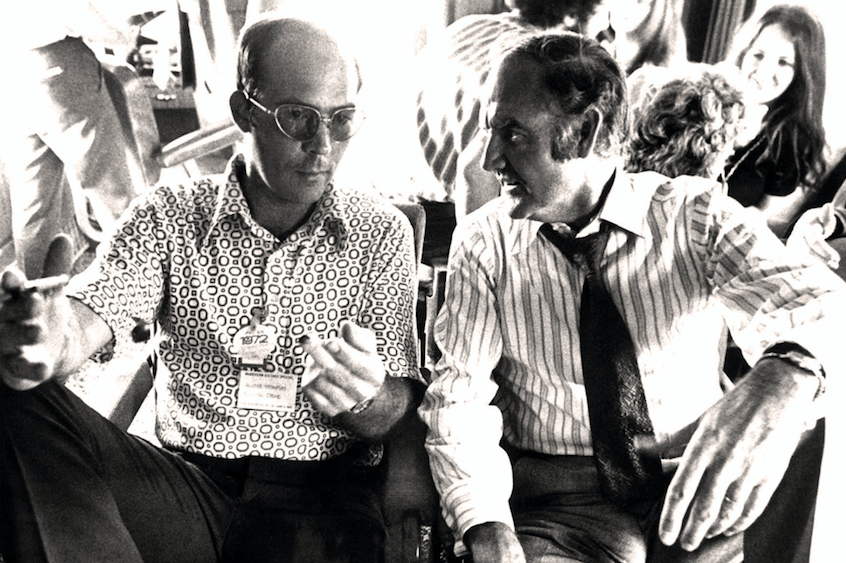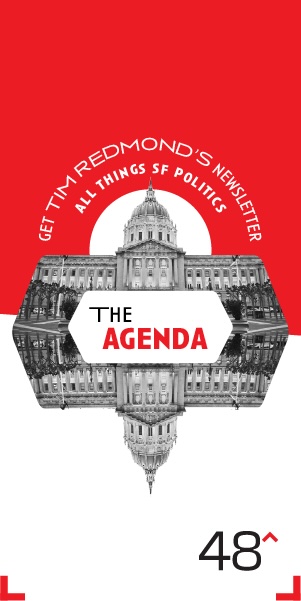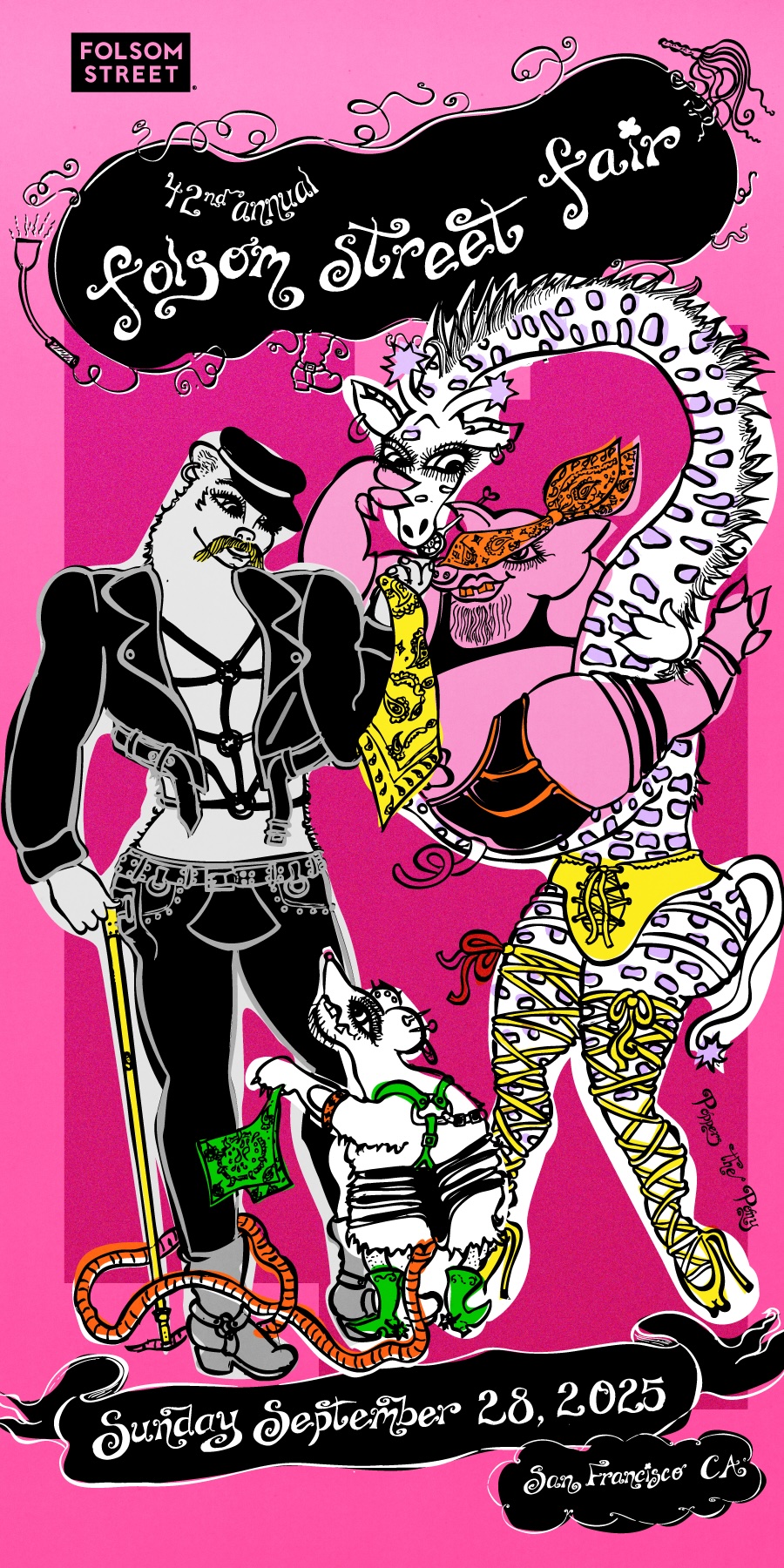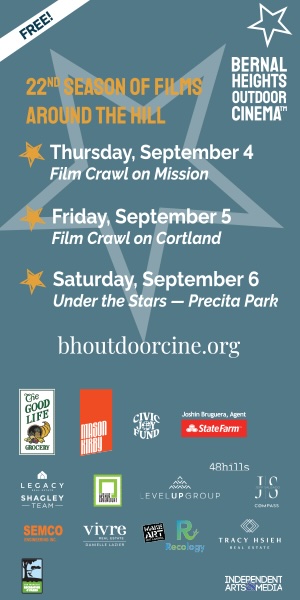I relished Citizen Hearst, the new PBS documentary, and not only because it featured local writer Gary Kamiya. It also made a solid case that, for good or ill, William Randolph Hearst helped shape the modern media landscape.
Hearst’s flagship publication, the San Francisco Examiner, came in for discussion, as did his first star columnist. Ambrose Bierce was known for savaging public figures, including railroad magnate Collis Huntington, whom Bierce accused of fleecing US taxpayers. But even Hearst didn’t escape Bierce’s scorn. “I don’t like the job of chained bulldog to be let loose only to tear the panties off the boys who throw rocks at you,” Bierce once told his boss.

As I watched the documentary, I was also thinking about Hunter S. Thompson, the subject of my forthcoming book. Thompson rose to fame at Rolling Stone, the upstart San Francisco rock magazinethatfeatured his Gonzo journalismand ferocious attacks on Richard Nixon. (Days after Nixon was reelected in a landslide, Thompson compared him to a werewolf.)
Early in his career, Thompson also lampooned the Hearst newspapers with Bierce-like fervor. How interesting, then, that Thompson later wrote for the San Francisco Examiner and ESPN, where the Hearst Corporation was (and still is) a major shareholder. In fact, the columns he wrote for those two outlets account for a substantial fraction of his total journalistic output. What explains his shift to Team Hearst?
To answer that question, we need to situate the Examiner historically. When Thompson first visited San Francisco in 1960, the so-called “Monarch of the Dailies” had been shifting rightward for decades. (Citizen Hearst explains that shift as the publisher’s personal response to FDR and the New Deal.) Although its reporters thought they could teach the San Francisco Chronicle staff a thing or two about hard news, the Examiner was losing the circulation war, and it signed a joint-operating agreement with the Chroniclein 1965.
Upon his arrival in San Francisco, Thompson applied for jobs at both papers. When that came to naught, he moved to Big Sur. It was an odd decision for a journalist but a slightly more sensible one for a would-be novelist. At that time, Big Sur was a Beat outpost and home to Henry Miller, one of Thompson’s idols, but the Examiner had long decried Miller and his milieu.
Some of that outrage surfaced after Mildred Edie Brady wrote “The New Cult of Sex and Anarchy” for Harper’s magazine in 1948. A freelance writer from Berkeley, Brady cast Miller as a pillar of Big Sur’s bohemian community. Her tone was sardonic, but a four-part series in the Examineraddeda macabre spin, decrying the “hate cult” and “doctrine of doom” that Miller spawned.
Thompson skewered that coverage in a photo-essay called “Big Sur: The Tropic of Henry Miller.” He motivated his piece by debunking earlier descriptions of the region. “If half the stories about Big Sur were true,” Thompson wrote, “the vibrations from all the orgies would have collapsed the entire Santa Lucia mountain range, making the destruction of Sodom and Gomorrah look like the work of a piker.” Published in Rogue, a men’s magazine created in Playboy’s image, it was Thompson’s first piece for a national outlet.
Help us save local journalism!
Every tax-deductible donation helps us grow to cover the issues that mean the most to our community. Become a 48 Hills Hero and support the only daily progressive news source in the Bay Area.
Thompson eventually resettled in San Francisco, where he struggled as a freelance journalist. In 1965, he begged Carey McWilliams, editor of The Nation magazine, for an assignment. McWilliams suggested he write about the Hell’s Angels, which led to Thompson’s first bestselling book, but Thompson also wrote a piece for The Nation about campus dissent in Berkeley. By that time, an East Bay legislator had sponsored a bill that targeted non-student protestors on campus. It received a boost from FBI director J. Edgar Hoover’s testimony that 43 Communists were involved in the Free Speech Movement. Thompson seized the opportunity to lampoon both Hoover and a local newspaper that had declined to hire him.
Where Mr. Hoover got his figure is a matter of speculation, but the guess in Berkeley is that it came from the San Francisco Examiner, a Hearst paper calling itself “The Monarch of the Dailies.” The Examiner is particularly influential among those who fear King George III might still be alive in Argentina.
Thompson wasn’t done with the Hearst chain. Six years later, he wrote a Rolling Stone piece about the death of journalist Ruben Salazar, who was killed by a Los Angeles deputy sheriff during an antiwar demonstration. As usual, Thompson paid careful attention to other media outlets and singled out the Los Angeles Herald-Examiner for special criticism.
One of its editorials credited the police chief’s claim that the violence was attributable to a “hard core group of subversives who infiltrated the anti-war rally and turned it into a mob.”
Thompson dismissed the Herald-Examiner as “a genuinely rotten newspaper” whose perverted purpose was a monument to “everything cheap, corrupt, and vicious in the realm of journalistic possibility.” He also wondered how “the shriveled Hearst management can still find enough gimps, bigots, and deranged Papists to staff a rotten paper like the Herald.” Its very existence, he concluded, “explains a lot about the mentality of Los Angeles—and also, perhaps, about the murder of Ruben Salazar.”
In the early 1970s, and with Thompson’s help, Rolling Stone became what Chronicle music columnist Joel Selvin later called “the voice of its generation.”
The magazine’s cofounder, Jann Wenner, remained on the lookout for big stories, and in 1975, Rolling Stone published an important investigative piece about Patricia Hearst. Her saga had received heavy coverage from the moment the Symbionese Liberation Army kidnapped the 19-year-old heiress from her Berkeley apartment. The frenzy escalated when Patty Hearst announced that she had joined the rag-tag outfit, and it peaked when some of her comrades perished during a shootout with the LAPD. After watching the confrontation on live television, Patty Hearst disappeared. Even after the FBI arrested her in September 1975, little was known about the sixteen months she spent underground.
That changed when Howard Kohn and David Weir detailed her movements in their two-part Rolling Stone article. One of the sources was Will Hearst, Patty’s cousin, whom Wenner met and befriended as the story took shape. Will was being groomed for upper management in the family business, but Wenner hired him as the managing editor of Outside magazine, a position Hearst retained until Wenner moved his operations to New York City in 1977. After a stint in the nascent cable-television industry, Hearst became the Examiner’s publisher.
By that time, Thompson had been living in Colorado for almost two decades, but Hearst recruited him to spice up the Examiner. Over the next five years, Thompson churned out 175 columns, first as the paper’s media critic and then as a 1988 campaign observer. Given Thompson’s remarks about Hearst papers over the years, his arrangement with the Examiner was ironic, but so was Will Hearst’s relationship with the Bay Area tech industry. As the Internet decimated what was left of the family’s newspaper chain, Hearst profited handsomely from his tech investments.
Thompson saw no reason to spare his boss, especially on the subject of money. In “Secret Cables to Willie Hearst,” Thompson demanded that Hearst the Younger reimburse his expenses, just as his grandfather would have done.
“When the Old Man sent Jack London and Frederic Remington to cover his war in Cuba,” Thompson wrote, “I doubt if he told them to pay their own expenses.” Where, he asked Hearst, was his performance bonus, the check for his Phoenix trip, and his reimbursement for the television dish he installed at his home? Once again, Thompson compared Hearst unfavorably to his grandfather:
The Old Man was a monster, but nobody ever accused him of skimming nickels and dimes off his best writers’ expense accounts—and it wasn’t his cheapjack accountants who made him a legend in American journalism and the highest roller of his time.
When I spoke to him, Hearst said the chief challenge of working with Thompson was obtaining copy. He also commended editor David McCumber, whom he referred to as Thompson’s “case officer,” for recasting the fragments he received from the Gonzo legend.
Even by Thompson’s standards, his visits to San Francisco during this time were raucous. He befriended porn impresarios Jim and Artie Mitchell and described their O’Farrell Theatre as “the Carnegie Hall of public sex in America.” In 1988, the Mitchells produced a 30-minute movie called “Hunter S. Thompson: The Crazy Never Die.” It featured Thompson lampooning Ronald Reagan and Richard Nixon before live audiences, working with McCumber in the Examiner newsroom, and chatting with strippers. During this time, Thompson was purportedly researching a story on feminist pornography for Playboy and writing a book for Random House whose title, The Night Manager, echoed his self-appointed position at the O’Farrell Theatre.
He never completed either project, and his persona tilted from roguish to sordid.
In 1990, the year Thompson’s final article ran in the Examiner, he was arrested and charged with sexual assault at his home in Colorado. A police search also turned up drugs and explosives.
To show their support for Thompson, the Mitchells restored a 1971 Chevrolet Caprice convertible, the same model Thompson’s protagonist drove in Fear and Loathing in Las Vegas, and led a caravan with several dancers to Colorado.
They timed their arrival to coincide with Thompson’s preliminary hearing, but prosecutors dropped the charges. Thompson regarded the outcome as a victory for the Fourth Amendment.
Shortly after that, the Mitchells self-destructed. Artie, who admired Thompson but was lost in cocaine and alcohol, threatened both Jim and his longtime girlfriend. Jim, who had protected his younger brother for years, drove to Artie’s home in Marin County and shot him. After a high-profile trial, Jim was convicted of voluntary manslaughter.
In 2000, Thompson began writing an online column at ESPN. The offer came from John Walsh, a formermanaging editor at Rolling Stone. In 1988, Walsh began his long career at ESPN, and by the time Thompson signed on, the Hearst Corporation owned a 20 percent stake in the cable-television goldmine. Thompson loved the idea of returning to sportswriting, where he began his career in journalism, but Walsh said his physical and intellectual decline was painfully obvious. Although the ESPN columns slipped into self-imitation, Thompson produced 128 pieces peppered with political commentary and media criticism, and his day-after column about the 9/11 attacks stands among his most prophetic works.
More than five decades after producing his first bestselling book, Hunter S. Thompson remains a cultural icon, and San Francisco is a central part of his story. During his salad days, he rode with the Hell’s Angels, listened to Jefferson Airplane, participated enthusiastically in the city’s drug culture, and wrote for Rolling Stone magazine.
Every inch a man of his time, he was also a throwback. Like Mark Twain a century earlier, Thompson arrived in San Francisco as an obscure journalist, thrived on its anarchic energy, and left as a national figure. Many have also compared Thompson to Bierce, and in some ways, his sassy comments about Will Hearst resembled his precursor’s banter with the Old Man. Perhaps it’s not such a great surprise, then, that Thompson eventually rented his weird services to the Monarch of the Dailies.
Peter Richardson is the author of Savage Journey: Hunter S. Thompson and the Weird Road to Gonzo. His other works include critically acclaimed books about the Grateful Dead, Ramparts magazine, and Carey McWilliams. Bred and buttered in the East Bay, he now lives in Sonoma County.





